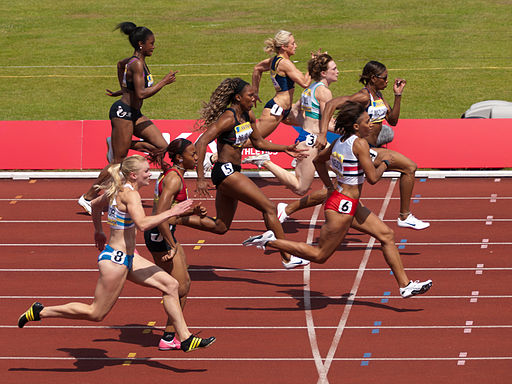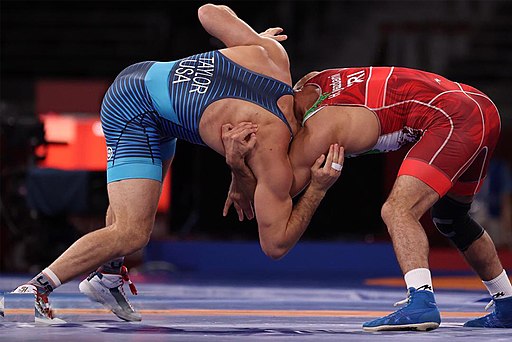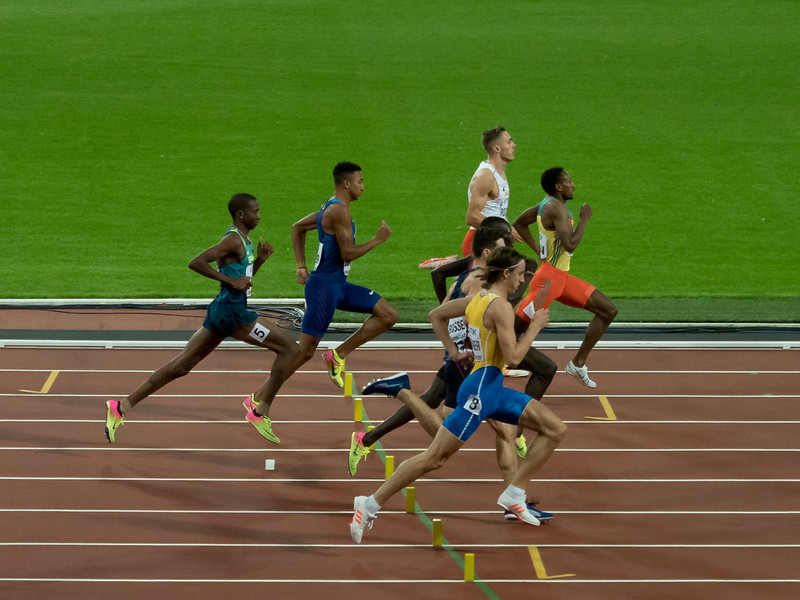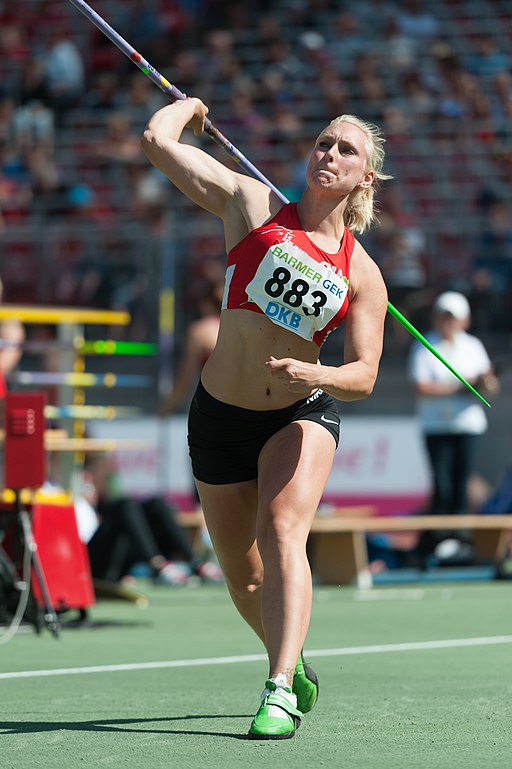2022.10.17, 10.24, 10.31| By Gregory Nagy





Essay 1. Beyond the Labors of Hēraklēs
1§0. In the last essay of Part II, I considered the deeds of Hēraklēs in myths that showed him fighting brutes known as Centaurs. Whether or not we accept the idea, proposed in that essay, that the sculptures of the West Pediment of the Temple of Zeus in Olympia might have featured Hēraklēs himself as the central hero of the action pictured in the sculpted narrative of that pediment, which is telling the story of a victory of civilization over brutality, the fact remains that there has survived, even to this day, a wealth of ancient texts, surveyed in Parts I and II of this book, that bear witness to the central idea that Hēraklēs really was the primary hero who defended the world against Centaurs and other brutes—and when I say “brutes” here I include of course not only outright beasts but also humans who are bestial or at least beastly. So, if it is true that Hēraklēs is the primary hero of the West Pediment, then the sculptures of that pediment are a most splendid additional witness to this central idea about Hēraklēs as the primary hero who saved the world. On the other hand, even if what I say were not true, there remains nevertheless also another most splendid set of sculptures that could also bear witness. These sculptures are embedded in the metopes of the Temple of Zeus in Olympia. You can still see sizable fragments of these sculptures today, right before your eyes, at ground level, inside the modern museum of ancient Olympia. In ancient times, by contrast, you would have seen these sculptures not at ground level but on high, as you looked up from ground zero and contemplated, first of all, the sculptures of the West Pediment, also of the East Pediment of the temple, and then you would also have seen on high, right beneath the two pediments facing west and east, the magnificent sculptures of the twelve metopes—six metopes facing west and six facing east. The first Labor you would see, since you would be arriving at the sacred space of Olympia along the road coming from the north, would have been the First Labor pictured in the first metope, up on high in the northwest corner of the temple. Yes, you would see him there, a youthful Hēraklēs victoriously standing over the dead Nemean Lion—he killed the beast, as we have already read, by way of a choke hold that was permitted in athletic events of free-form wrestling. In the essays leading up to this point in the book, I have said about this metope, and actually about all twelve of these metopes picturing the Twelve Labors of Hēraklēs, that they illustrate—and most brilliantly so—this hero’s mythological role as the ultimate Strong Man who defeats hostile forces that threaten the world order. But now the time has come to go beyond the Labors of Hēraklēs.
1§1. I will now start to contemplate this hero’s Labors as simply ‘labors’, regardless of who experiences the labors. In formulating what I say, I will be concerned not so much with specific visualizations of Labors performed by Hēraklēs but rather with the general meaning of the Greek word that refers to all Twelve Labors of Hēraklēs as verbalized in ancient Greek texts and as visualized in all twelve metopes of the Temple of Zeus. The word for all those Labors, as we have learned from all the textual evidence we have been reading in Parts I and II, is âthloi (áethloi).
1§2. In the original printed version of The Ancient Greek Hero in 24 Hours (Nagy 2013), which I abbreviate as H24H, I analyzed the meaning of this word âthloi (áethloi) in the context of anthropological perspectives involving terms like “myth,” “ritual,” and “aetiology.” The analysis appeared in a part of the book that took up pages 263–275 of H24H, but I omitted those pages of content—as well as other pages of the original H24H—in a paperback printed version, to which I refer here as h24h (Nagy 2020). There was a good reason for my omissions in h24h: I was intending to rewrite the content that I omitted in h24h from the printed version of H24H and to integrate a revised version of that content into the book that I am presenting here, Ancient Greek Poets, Athletes, Poetry, abbreviated as AGHAP. In the online version of H24H, which is available at https://chs.harvard.edu/book/nagy-gregory-the-ancient-greek-hero-in-24-hours/, the original pages that are missing in the paperback version of h24h have not been omitted. But those pages have not been rewritten in the online version. Instead, I present here in AGHAP the intended rewritten version, based on a prototype that was first published online (Nagy 2015) and then, later, in a printed volume edited by Alison Futrell and Thomas Scanlon (Nagy 2021). Also, in what I rewrite from H24H here in Part III of AGHAP, I will indicate at the end of each rewritten paragraph the number of the original paragraph that can still be found in the online version of H24H.
1§3. As I pointed out already in Part I Essay 3 §25, the specific idea of any given Labor performed by a hero like Hēraklēs in the heroic world and the general idea of athletic competition in the post-heroic world could be conveyed by one and the same ancient Greek word, âthlos, which I will hereafter write as āthlos, without indicating the word’s accentuation. And, as I also pointed out, the English word athlete is a borrowing from the ancient Greek word āthlētēs, derived from āthlos, and this derivation indicates a direct connection between the efforts of āthlētai ‘athletes’ competing at the festival of the Olympics in the post-heroic age and the Labors of Hērakles, founder of that festival in the heroic age. But the significance of the word āthlos is not at all limited to the physical setting of ancient Olympia, home of the Olympics. The meaning of âthlos goes far beyond the Labors of Hēraklēs in myths about the heroic past. This same word āthlos had a related significance in the rituals of the historical present reported by ancient sources—and here I refer to what I have been calling the ancient ritual complex of athletic competitions of āthlētai ‘athletes’ not only at the festival of the Olympics in Olympia but also at a multitude of other festivals. Whereas I concentrated in Parts I and II on the connectedness of athletic competitions at the Olympics in Olympia with myths about the Labors of Hēraklēs, I will now proceed here in Part III to think more generally about the word āthlos without specifically thinking about the Labors of Hēraklēs—though neither that hero nor his deeds can altogether disappear from view. So, I need to produce a general working definition of āthlos .
1§4. Before defining āthlos, however, I need to review my working definitions of “myth,” “ritual,” and “aetiology.” In the case of myth and ritual, I repeat here what I said already in H24H 00§13:
Ritual is doing things and saying things in a way that is considered sacred. Myth is saying things in a way that is also considered sacred. So, ritual frames myth.
In terms of this working definition, myth is actually a part of ritual. As for aetiology, here is my working definition in H24H 7a§15 (also already in Nagy 1979/1999:279):
An aetiology is a myth that motivates an institutional reality, especially a ritual
1§5. With these working definitions in place, I will now consider the basic meaning of the masculine-gender noun āthlos (epic aethlos), which I propose to translate as ‘ordeal, contest’, not only as ‘labor’. This translation needs to be considered alongside my translation of the neuter-gender noun āthlon (epic aethlon) as ‘prize won in the course of participating in an āthlos’, and of the derivative noun āthlētēs as ‘athlete, one who participates in an āthlos and who strives for an āthlon’. To restate the concept of athletics in ancient Greek terms: an āthlos was the ritual ‘ordeal’ or ‘contest’ or ‘labor’ of an athlete engaging in athletic contests that were taking place in the historical present, but it was also the mythological ‘ordeal’ or ‘contest’ or ‘labor’ of a hero engaging in life-and-death contests that took place once upon a time in the heroic past; moreover, the ritual ‘ordeals’ or ‘contests’ or ‘labors’ of the historical present were viewed as re-enactments of the mythical ‘ordeals’ or ‘contests’ or ‘labors’ of the heroic past (Nagy 1990a:137 at 5§3). That is to say, the myths about the life-and-death experiences of heroes functioned as aetiologies for the rituals of athletic competition. [H24H 8b§3]
1§6. Besides āthlos and its derivatives, another ancient Greek word that proves to be essential for understanding the nature of athletic contests in ancient contexts is agōn, derived from the root ag‑ of the verb ag-ein as it is used in the compound formation sun-agein, which means ‘bring together, assemble, gather’. Basically, an agōn is a ‘bringing together’ of people; and the occasion of such a ‘bringing together’ is a ‘competition’. This meaning, ‘competition’, is still evident in the English borrowing of a compound formation involving the word agōn, that is, antagonism. We can see a comparable idea embedded in the meaning of the Latin word that gives us the English borrowing competition: basically, the meaning of Latin com-petere is ‘to come together’, and to come together is to compete (Nagy 1990a:136-137 at 5§2). In the case of the Greek word agōn, the activity of competition to which it refers was understood to be a ritual ordeal, just as the Greek word āthlos meant ‘ordeal’ or ‘labor’ as well as ‘contest’, that is, competition. The concept of ‘ordeal’ or ‘labor’ as embedded in the Greek word agōn is still evident in the English borrowing agony. [H24H 8b§4]
Essay 2. Parallelisms between athletics and warfare
2§0. The words āthlos and agōn referred not only to the experience of a ritualized ordeal in the athletic competitions that took place in the historical present of ancient times but also to the experiences of heroes in their own mythological past. And such ordeals included not only athletics but also warfare. That is why, for example, the expression arēios agōn, ‘the agōn of Arēs’, as used by Herodotus (9.33.3), refers to the ritual experience of combat in war. Similarly in the case of āthlos (epic aethlos), this word or its derivatives can refer to the efforts of warriors and athletes in the historical present or near-present (Herodotus 1.67.1, verb ἀέθλεον, with regard to warriors, and Herodotus 5.22.2, verb ἀεθλεύειν, with regard to athletes). Also, in Homeric poetry, we find the word aethlos referring to the martial efforts, all considered together, of Achaeans and Trojans alike in the Trojan War (Iliad 3.126), or, considered separately, to the martial efforts of the Achaeans in general (Odyssey 3.262) or even of Odysseus in particular (Odyssey 4.170). [H24H 8b§5]
2§1. In the historical present of the ancient world, then, the experience of fighting in war was a ritual ordeal—like the experience of competing in an athletic event. Both kinds of ritual experience were a matter of āthlos or agōn. And to undergo such ordeal was to re-enact the primal ordeals of heroes. When it came to such re-enactment in war, I should add, there would have been a near-endless variety of individual experiences in the historical present to be matched with the individual experiences of heroes in the mythological past. Individuals would have had their own ways of going through an ordeal, and a model for such individual experiences, to give just one example, would have been the staggering varieties of heroic violence in the Iliad. [H24H 8b§6]
2§2. As we have just seen from observing the uses of the words āthlos and agōn in referring to an experience like war, there does not seem to be a distinction made between the ritual ordeals of warriors fighting wars in the historical present of the ancient world and the mythical ordeals of heroes fighting their own wars in the mythological past of the heroic age. To our way of thinking, in our own age, we might have expected something different: when men and women and children underwent the real experience of war in their historical present, their experience might be seen as distinct from the mythical experiences of heroes in the age of heroes. But our expectations would be mistaken. The ancient way of thinking was different: in terms of ritual and myth, men and women and children who experience the shock of war are undergoing a ritual ordeal that re-enacts the mythical ordeals of heroes. This way, the distinction between the ritualized ordeals of war in the present and the mythical ordeals of war in the past is neutralized. [H24H 8b§7]
2§3. Such a mentality of not distinguishing between the post-heroic age and the heroic age in the context of ritual and myth applies not only to the ordeals of war but also to the ordeals of athletics. It can be said in general that different aspects of athletics re-enact different aspects of warfare as experienced by heroes. Besides such obvious examples as the throwing of spears or javelins, however, there are other examples where it is not at all obvious how a given kind of athletic event is related to a given kind of event in warfare, even if these two kinds of events are defined by the same instrument of war. One such example is the athletic event of chariot racing. The question here is this: how exactly is chariot racing as an athletic event related to chariot fighting as an event in warfare? The answer here is not obvious until we examine at a later point, in Part III Essay 9, two different kinds of chariot racing as attested at two different athletic festivals. [H24H 8b§8]
2§4. For now, however, it is enough to keep in mind a basic fact that that we can see by simply observing the uses of words like āthlos and agōn: just as these words can refer to the ritualized ordeals of those who experience real wars in their own time, not only to the mythologized ordeals of heroes in mythical wars of the distant past, so also the ritual ordeal of an athlete who competes in a real athletic contest is not distinguished, in terms of words like āthlos and agōn, from the corresponding mythical ordeals of heroes. [H24H 8b§9]
2§5. So far, I have been saying that an athlete who competes in an athletic competition is thereby undergoing a ritual ordeal that re-enacts the mythical ordeals of heroes in war. But I can also say that the mythical ordeals of heroes may include any life-and-death experience, not only the experience of combat in war (Nagy 1990a:138-139 at 5§4). For a test case, I return to the word aethlos as it is used in Homeric poetry. I build here on what I noted already in Essay 1, that aethlos can refer in epic to the martial efforts, all considered together, of Achaeans and Trojans alike in the Trojan War (Iliad 3.126), or, considered separately, to the martial efforts of the Achaeans in general (Odyssey 3.262) or even of Odysseus in particular (Odyssey 4.170). But now I can add that we also find the same word aethlos referring to the Labors of Hēraklēs in epic poetry (Iliad 8.363; also Iliad 19.133, Odyssey 11.622 and 624). Moreover, there are two particularly striking examples where aethlos is used with reference to a single Labor, that is, to the hero’s life-and-death struggle with the Nemean Lion, in the lyric poetry of both Pindar (Isthmian 6.48) and Bacchylides (Epinician 9.8).
2§6. So, the ritual ordeal of an athlete competing with other athletes in an athletic event re-enacts not only the ritual ordeal of a hero fighting to the death with other heroes in war: more than that, the ritual ordeals of athletes can re-enact any and all life-and-death experiences of heroes, not only their experiences in war.
Essay 3. Athletics as a compensation for death
3§0. The ritual ordeal of an athlete is not only a re-enactment: it is also a compensation for one single fact that is larger than life itself. And that fact is the hero’s mortality. The hero, though he or she is larger than life, is subject to death. To make up for a prototypical death experienced by a hero—a death that is understood to be larger than life just as the hero is larger than life—athletes must die ritually to their old selves. Unlike the prototypical death of the hero in myth, however, which can happen only once, the figurative death of the athlete in ritual is recurrent, taking place year after year at the right season, in the context of seasonally recurring festivals. And, since such a prototypical ordeal of death experienced by a hero is understood to be larger than life, the corresponding ordeals of athletes can fully compensate for such a heroic death only if the seasonal recurrence of these ordeals, now experienced by athletes, lasts for a notional eternity.
3§1. There is a clear example of such a mentality in the Homeric Hymn to Demeter, where we see a myth about the establishment of an athletic ritual in compensation for the ordeal of a hero’s death. The queen of Eleusis, mother of the infant hero Demophon, had inadvertently ruined the plan of the goddess Demeter to make Demophon exempt from death, and the goddess angrily announces that the infant will now be subject to death, like all other mortals. But there will be a compensation for the ordeal of this hero’s death, says the goddess to the mortal mother of Demophon:
|259 ἴστω γὰρ θεῶν ὅρκος ἀμείλικτον Στυγὸς ὕδωρ |260 ἀθάνατόν κέν τοι καὶ ἀγήραον ἤματα πάντα |261 παῖδα φίλον ποίησα καὶ ἄφθιτον ὤπασα τιμήν· |262 νῦν δ’ οὐκ ἔσθ’ ὥς κεν θάνατον καὶ κῆρας ἀλύξαι. |263 τιμὴ δ’ ἄφθιτος αἰὲν ἐπέσσεται οὕνεκα γούνων |264 ἡμετέρων ἐπέβη καὶ ἐν ἀγκοίνῃσιν ἴαυσεν. |265 ὥρῃσιν δ’ ἄρα τῷ γε περιπλομένων ἐνιαυτῶν |266 παῖδες Ἐλευσινίων πόλεμον καὶ φύλοπιν αἰνὴν |267 αἰὲν ἐν ἀλλήλοισι συνάξουσ’ ἤματα πάντα.
|259 I [= Demeter] swear by the implacable water of the Styx, the witness of oaths that gods make, as I say this: |260 immortal and ageless for all days |261 would I have made your dear [philos] little boy, and I would have given him honor [tīmē] that is unwilting [a-phthi-tos]. |262 But now there is no way for him to avoid death and doom. |263 Still, he will have an honor [tīmē] that is unwilting [a-phthi-tos], for all time, because on my knees |264 he had once sat and slept in my arms. |265 At the right season [hōrā], every year, |266 the sons of the Eleusinians will have a war, a terrible battle among each other. |267 They will do so for all days to come.
Homeric Hymn to Demeter 259-267
3§2. The death of the infant hero will be compensated by seasonally recurring athletic re-enactment, as expressed by the word tīmē ‘honor’ (line 263), which refers here to the honor conferred upon cult heroes in the rituals of hero cult. In this case, the rituals take the form of athletic competitions that overtly simulate warfare. And these rituals will have to recur seasonally, year after year, for a notional eternity. That is why the tīmē ‘honor’ (line 263) that the prototypical hero receives in compensation for his death is described as a-phthi-tos ‘unwilting’, lasting forever.
3§3. We see in this passage a reference to a mock battle, an athletic event known as the Ballētus, which was evidently the ritual kernel of a whole complex of events known as the Eleusinian Games (Nilsson 1906:414n4; Nagy 1990a:121n26 at 4§7; Pache 2004:76-77). Here is how the athletic event is defined in the Alexandrian lexicographical tradition named after Hesychius: Βαλλητύς· ἑορτὴ Ἀθήνησιν, ἐπὶ Δημοφῶντι τῷ Κελεοῦ ἀγομένη ‘Ballētus is a festival in Athens, celebrated in-honor-of [epi] Demophon son of Keleos’. For the moment, I translate the preposition epi (ἐπὶ) here as ‘in honor of’. As we will see later, however, a more accurate translation is ‘in compensation for [the death of]’.
3§4. This athletic event, the Ballētus, as featured in the Eleusinian Games, was understood to be a form of eternal compensation for the prototypical death of the cult hero Demophon, as we can see from the reference to this event as I quoted it from the Homeric Hymn to Demeter. And there are historical parallels, including the athletic festivals known as the Nemean Games, held at Nemea, and the Isthmian Games, held at the Isthmus of Corinth. The Nemean and the Isthmian Games were seasonally recurring festivals featuring athletic competitions that were intended as an eternal compensation for the prototypical deaths of two other infant heroes, Arkhemoros and Melikertes respectively (Pache 2004:95-180). I will have more to say in Essay 4§9 about those two heroes.